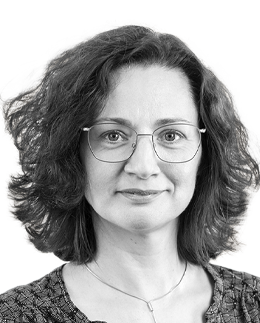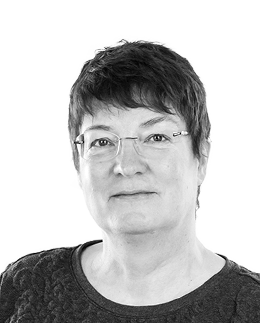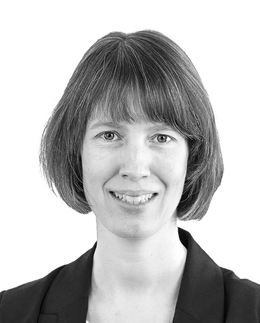Heike Spangenberg holds a degree in educational science and completed her Ph.D. on "Convergence or permanent differences? On the Development of Study Decisions and Post-School Educational careers since 1990 in East and West Germany" at the Humboldt University in Berlin in 2016. In 2017, she was awarded the Ulrich Teichler Prize for outstanding dissertations in higher education research. Heike Spangenberg has been a research associate at the DZHW since 2000 and has been senior researcher of the Student Life Cycle Panel since 2021. Prior to that, she was head of the project "Student Life Cycle Panel" from 2006 to 2020, and from 2000 to 2002 she worked on the DZHW Drop-out and first-year student surveys. Prior to this, she studied educational sciences (minor subjects: sociology, psychology) at the PH Erfurt and the Université de Picardie Amiens (France) from 1995 to 2000..

Dr. Heike Spangenberg
Research Area Educational Careers and Graduate Employment
Researcher
- +49 511 450670-151
- +49 511 450670-960
- Orcid
Academic research fields
Transition from school to university, regional differences with regard to educational decisions, contexts of educational decisions.
List of projects
List of publications
Tertiary Education, Changing One’s Educational Decision and the Role of Parental Preferences.Christoph, B., Spangenberg, H., & Quast, H. (2023).Tertiary Education, Changing One’s Educational Decision and the Role of Parental Preferences. Research in Higher Education (online first). https://doi.org/10.1007/s11162-023-09752-9 Abstract
Unequal access to university and the decision processes that give rise to it are important factors in the accumulation of educational inequalities. In this paper, we investigate a specific aspect of such decision processes by focusing on those students who change their original plans to start a (nontertiary) vocational education and decide to pursue a tertiary degree instead. In doing so, we find that more than one-fifth of the students in our sample who originally planned to pursue a vocational education change their original decision in this way. |
Von direkten und alternativen Wegen ins Studium: Eine quantitative Analyse zum sozialen Phänomen der beruflich-akademischen Doppelqualifizierung von Studienberechtigten.Ordemann, J., Buchholz, S., & Spangenberg, H. (2023).Von direkten und alternativen Wegen ins Studium: Eine quantitative Analyse zum sozialen Phänomen der beruflich-akademischen Doppelqualifizierung von Studienberechtigten. In J. Ordemann, F. Peter, & S. Buchholz (Hrsg.), Vielfalt von hochschulischen Bildungsverläufen (S. 47-77). Wiesbaden: Springer. https://doi.org/10.1007/978-3-658-39657-2_3 Abstract
This paper focuses on dual qualifications (vocational and academic) and on how they affect social disparities in the probability of going to university. We analyze data from the DZHW Panel Study of School Leavers with a Higher Education Entrance Qualification 2012 to assess whether students find their way into academia via alternative pathways (vocational training) and whether this reduces existing social disparities in their likelihood of studying. This approach allows us to look at the educational pathways and detours to higher education over a more extended time than has been done in earlier studies and to highlight the effect of the timing of vocational training. On the one hand, our results confirm earlier findings ... |
Zum Einfluss vorgelagerter Bildungspfade auf die Studienentscheidung.Spangenberg, H., & Quast, H. (2023).Zum Einfluss vorgelagerter Bildungspfade auf die Studienentscheidung. In J. Ordemann, F. Peter, & S. Buchholz (Hrsg.), Vielfalt von hochschulischen Bildungsverläufen (S. 21-46). Wiesbdaden: Springer (online first). https://doi.org/10.1007/978-3-658-39657-2_2 Abstract
Germany has a highly differentiated school system which opens up different paths to higher education entrance qualifications. However, recent sociological research on school leavers' qualification decisions has mainly only included selective aspects of the previous educational biography. The aim of this article is, therefore, (1) to identify the various patterns of educational progression before the higher education entrance qualification is acquired and (2) to determine the extent to which the decision to enter a university, a university of applied sciences, or not to enrol differs according to these patterns. Special attention is paid to the classic inequality dimensions of gender and educational background. To investigate these questions |
Karriere mit Kind – Wie wirkt sich frühe Mutterschaft auf das Erreichen von Führungspositionen bei Akademikerinnen aus?Brandt, G., & Spangenberg, H. (2022).Karriere mit Kind – Wie wirkt sich frühe Mutterschaft auf das Erreichen von Führungspositionen bei Akademikerinnen aus? KZfSS Kölner Zeitschrift für Soziologie und Sozialpsychologie, 74(3), 303-327. https://doi.org/10.1007/s11577-022-00854-3 |
Warum in die Ferne schweifen? Regionale Mobilität beim Übergang ins Masterstudium.Ohlendorf, D., Spangenberg, H., & Föste-Eggers, D. (2022).Warum in die Ferne schweifen? Regionale Mobilität beim Übergang ins Masterstudium. In M. Jungbauer-Gans & A. Gottburgsen (Hrsg.), Regionale Mobilität und Hochschulbildung (S. 83-113). Wiesbaden: Springer VS (online first). https://doi.org/10.1007/978-3-658-36156-3_4 Abstract
This article examines (1) which factors promote or hinder regional mobility within Germany when bachelor graduates take up a master’s programme, and (2) which factors influence the distance of migration when graduates change to a new university. Building on rational choice-based theories of migration we describe a change of university as a two-staged migration decision and analyse it using zero-inflated Poisson Regression models. Data from the 2012 DZHW panel study of school leavers with higher education entry certificate were linked to regional indicators from official statistics. n addition to the role of educational background, results indicate that previous migration experiences promote regional mobility. |
Studienberechtigte 2012 – Qualifizierungswege und Bildungserträge.Spangenberg, H., Ohlendorf, D., & Föste-Eggers, D. (2020).Studienberechtigte 2012 – Qualifizierungswege und Bildungserträge. (DZHW Brief 6|2020). Hannover: DZHW. https://doi.org/10.34878/2020.06.dzhw_brief |
Migrationsspezifische Unterschiede bei der Studienfachwahl.Mentges, H., & Spangenberg, H. (2020).Migrationsspezifische Unterschiede bei der Studienfachwahl. In M. Jungbauer-Gans & A. Gottburgsen (Hrsg.), Migration, Mobilität und Soziale Ungleichheit in der Hochschulbildung (S. 59-79). Wiesbaden: Springer Fachmedien. https://doi.org/10.1007/978-3-658-31694-5_3 |
Qualifizierungsstand und Arbeitsmarkteintritt der Studienberechtigten des Abschlussjahrgangs 2012. Akademische und nicht-akademische Bildungswege sechseinhalb Jahre nach Schulabschluss im Vergleich (Kurzbericht Studienberechtigtenpanel 2012).Spangenberg, H., Ohlendorf, D., & Foeste-Eggers, D. (2020).Qualifizierungsstand und Arbeitsmarkteintritt der Studienberechtigten des Abschlussjahrgangs 2012. Akademische und nicht-akademische Bildungswege sechseinhalb Jahre nach Schulabschluss im Vergleich (Kurzbericht Studienberechtigtenpanel 2012). Unveröffentlichter Projektbericht, DZHW, Hannover. |
Weiterqualifizierungs- und Erwerbseinstiegsverläufe nach dem Bachelorstudium.Spangenberg, H. (2019).Weiterqualifizierungs- und Erwerbseinstiegsverläufe nach dem Bachelorstudium. In M. Lörz & H. Quast (Hrsg.), Bildungs- und Berufsverläufe mit Bachelor und Master. Determinanten, Herausforderungen und Konsequenzen (S. 193-223). Wiesbaden: Springer VS. |
Erwerb der Hochschulreife und nachschulische Übergänge von Studienberechtigten. Studienberechtigte 2015 ein halbes Jahr vor und ein halbes Jahr nach Schulabschluss.Schneider, H., Franke, B., Woisch, A., & Spangenberg, H. (2017).Erwerb der Hochschulreife und nachschulische Übergänge von Studienberechtigten. Studienberechtigte 2015 ein halbes Jahr vor und ein halbes Jahr nach Schulabschluss. (Forum Hochschule 4|2017). Hannover: DZHW. ISBN 978-3-86426-058-2 |
Bildungsentscheidungen und Umorientierungen im nachschulischen Verlauf. Dritte Befragung der Studienberechtigten 2010 viereinhalb Jahre nach Schulabschluss.Spangenberg, H., & Quast, H. (2016).Bildungsentscheidungen und Umorientierungen im nachschulischen Verlauf. Dritte Befragung der Studienberechtigten 2010 viereinhalb Jahre nach Schulabschluss. (Forum Hochschule 5|2016). Hannover: DZHW. ISBN 978-3-86426-054-4 |
Realisierung von Qualifizierungsabsichten von studienberechtigten Schulabsolventinnen und -absolventen.Spangenberg, H., Quast, H., & Franke, B. (2015).Realisierung von Qualifizierungsabsichten von studienberechtigten Schulabsolventinnen und -absolventen. In Bundesinstitut für Berufsbildung (Hrsg.), Datenreport zum Berufsbildungsbericht 2015. Informationen und Analysen zur Entwicklung der beruflichen Bildung (S. 106-116). Bielefeld: W. Bertelsmann Verlag. |
Familienfreundlichkeit in der Praxis. Ergebnisse aus dem Projekt " Effektiv! - Für mehr Familienfreundlichkeit an deutschen Hochschulen " .Kunadt, S., Schelling, A., Brodesser, D., Samjeske, K., Middendorff, E., & Spangenberg, H. (2014).Familienfreundlichkeit in der Praxis. Ergebnisse aus dem Projekt " Effektiv! - Für mehr Familienfreundlichkeit an deutschen Hochschulen " . cews.publik.no18. Köln: Kompetenzzentrum Frauen in Wissenschaft und Forschung, gesis Leibniz-Institut für Sozialwissenschaften. |

















